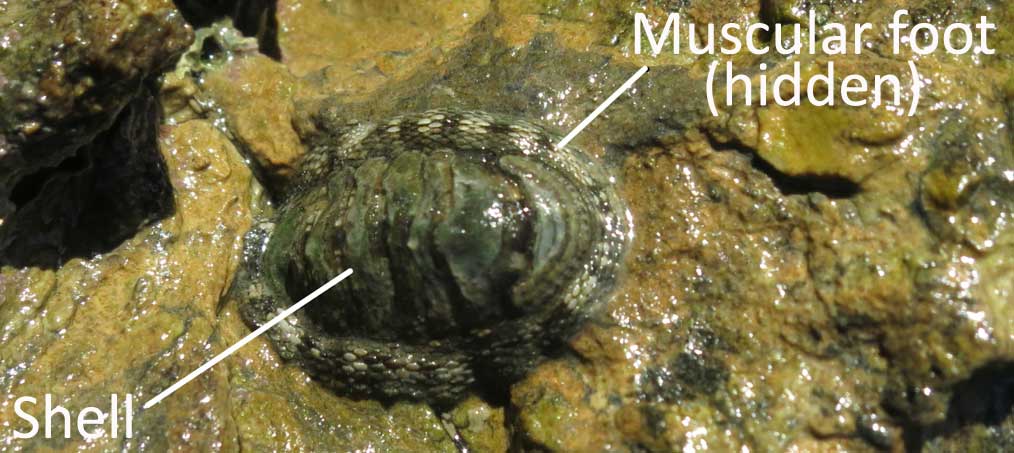A chiton
0
Overview
Using this Resource
Connecting to the Curriculum
Marking Student Responses
Working with Students
Further Resources
This task is about identifying features that help to protect an animal in its particular environment.
This small animal (chiton) lives on the tops and sides of rocks found between low and high tide marks.

Task administration:
This task can be completed with pencil and paper or online.
Copyright:

Image copyright: J.Fisher, PhotoKete | Image is used with permission and can be freely used for educational purposes within Aotearoa New Zealand classrooms.
Level:
3
Curriculum info:
Keywords:
Description of task:
Task: View photograph to explain how a chiton protects itself in its environment. Assessment focus: identifying features that help to protect an animal in its particular environment.
Curriculum Links:
Science capabilities
The capabilities focus is brought about by the conversations you have and the questions you ask.
Capability: Gather and interpret data
This resource provides opportunities to discuss:
- describing being about what you see, and explaining being about what your observations make you think.
- we can learn about animals by looking at them carefully and suggesting reasons for what we see.
- the clues that the pictures provide to help us make inferences.
Science capabilities:
Making Better Sense:
Answers/responses:
| Y6 (05/2006) | ||
| a) |
Any 2 of:
|
2 correct – moderate 1 correct – very easy |
| b) |
Any 2 of:
|
2 correct – difficult 1 correct – easy |
Results based on a sample of 185 Y6 students in May 2006
NOTE:
- Some students just gave a feature, e.g. shell, foot, with no explanation of how these gave protection. These answers were not accepted as correct.
- Some students suggested that the chiton might go in cracks between rocks, or small spaces, or on the side of the rock away from the wave action or predators. As chitons can sometimes be found in these positions these were accepted as correct answers.
Diagnostic and formative information:
| Common response | Likely misconception |
| It could protect itself by kicking its predators with its foot | Students think of a human's or mammal's foot. |
Percentage of students selecting different responses
| a) |
Ability to cling Shell/hardness Position Shape |
Nearly 60% About 50% About 15% Under 10% |
These percentages suggest that shape and camouflage may be two adaptations that could be focus areas. Whether chitons position themselves away from direct wave action could be an interesting investigation if students are visiting the rocky shore. |
| b) |
Shell/hardness Ability to cling Colour/camouflage/stillness Position |
Over 50% About 25% About 20% Just over 10% |
Next steps:
Next steps
Questions a) and b)
Focusing on adaptations
- Explore other conditions chitons have to survive (such as tides). What adaptations do they have to survive these conditions?
- Investigate other animals that live in the same area. In what ways are their adaptations similar/different?
- Investigate plants that live in the area. What adaptations do they have that help them survive there?
- For students who give a response about position, e.g., it hides in cracks in the rocks, ask why they think chitons that are not in these places don't get washed away. This will encourage them to focus on the chiton's specific adaptations.
Focussing on language
- Some students may benefit from exploring the broader scientific use of the word "foot". One animal that could provide a familiar context for this discussion is a snail.
The focus of the following book is on Interdependence, but it does explore the idea of animals in the tidal zone being adapted to suit their habitat.
- Ministry of Education (2002). Building Science Concepts Book 21, Life between the tides. Wellington: Learning Media. See especially Activity 3, page 14.

